
How to Care for Cedar Boot Trees: Essential Tips for Healthy Growth and Longevity
Are your cedar boot trees struggling to thrive despite your best efforts? You’re not alone! Cedar boot trees can be tricky to care for, especially when it comes to maintaining their health and ensuring long-term growth. 
But don’t worry—this guide is here to help! In the following sections, we’ll cover everything you need to know about cedar boot trees, from proper care techniques to common mistakes you should avoid. By the end, you’ll have the confidence to nurture your cedar boot trees into thriving, long-lived beauties. Let’s dive in!
Table of Contents
ToggleWhy Choose Cedar Boot Trees? 

Cedar boot trees are a must-have for anyone who wants to extend the life of their favorite boots while keeping them in top shape. But what makes them stand out? Let’s dive into the key benefits!

1. Preserve the Shape of Your Boots 
Cedar boot trees are designed to help maintain the natural shape of your boots. Over time, boots can lose their structure, especially if they’re made from leather or other delicate materials. By inserting a cedar boot tree, you can prevent unsightly creases, dents, and wrinkles, ensuring your boots always look their best.
2. Absorb Moisture and Odors 

Boots can accumulate moisture from sweat, rain, or snow, which can lead to unpleasant odors and mold growth. Cedar naturally absorbs excess moisture, keeping your boots dry and fresh. The wood also has a natural, pleasant scent that helps neutralize any odors, leaving your boots smelling great after every wear.
3. Protect Your Investment 
High-quality boots can be expensive, and you want to make sure they last as long as possible. Cedar boot trees help reduce the wear and tear caused by improper storage, such as squashing or bending your boots. By using them regularly, you’re investing in the longevity of your boots, saving money in the long run.
4. Eco-Friendly and Sustainable 
Cedar wood is not only durable but also eco-friendly. It’s naturally sourced and biodegradable, making it a sustainable option for those who care about the environment. By choosing cedar boot trees, you’re opting for a solution that benefits both your boots and the planet.
5. Easy to Use and Maintain 
Using cedar boot trees couldn’t be easier! Simply insert them into your boots after each wear, and they’ll do the rest. They require little maintenance—just an occasional light sanding to refresh the scent and moisture-absorbing properties. It’s a low-effort, high-reward solution for boot care.
6. Perfect for All Boot Types 

Whether you have leather, suede, or synthetic boots, cedar boot trees are versatile and suitable for all materials. Their gentle yet effective design ensures that they can be used with a variety of boot styles, from work boots to dress boots, providing excellent care for each one.
Cedar boot trees offer a practical, long-lasting solution for keeping your boots in top condition. They preserve shape, absorb moisture and odors, and help protect your investment—all while being eco-friendly and easy to maintain. If you’re looking to extend the lifespan of your boots, cedar boot trees are an essential addition to your shoe care routine.
Ideal Growing Conditions for Cedar Boot Trees 
Cedar Boot Trees thrive in specific conditions that make their growth strong and healthy. Whether you’re a seasoned gardener or just starting out, understanding their ideal environment will set you up for success. Let’s break it down:
1. Location: Sunlight is Key 
Cedar Boot Trees love full sun, which helps them grow tall and strong. Aim for a spot that gets at least 6 hours of direct sunlight each day. While they can tolerate partial shade, they will grow much better and healthier with more sunlight exposure. 
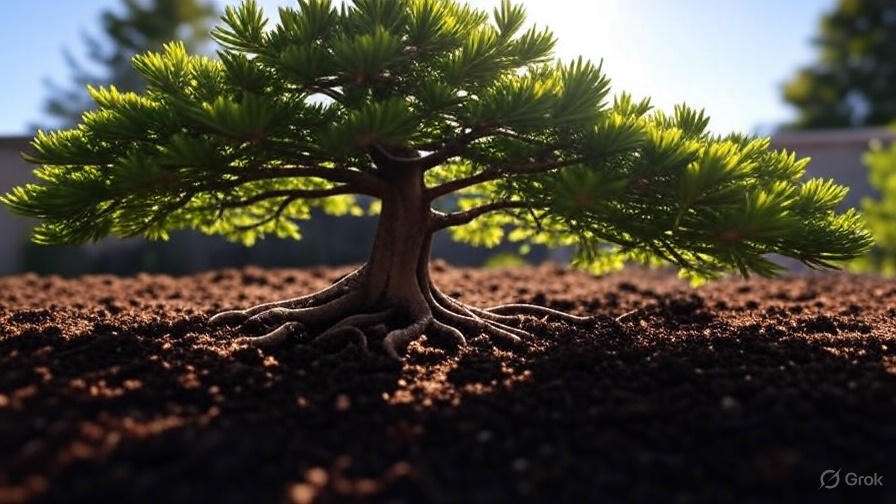
2. Well-Drained Soil 
The soil should be well-draining to prevent water from pooling around the roots. Cedar Boot Trees are prone to root rot in soggy conditions, so aim for soil that doesn’t stay wet for too long. Loamy or sandy soil is ideal, and adding organic matter can help improve soil structure. If you’re unsure about drainage, consider planting your tree on a raised bed to promote better water flow.
3. Optimal Temperature 
Cedar Boot Trees are quite adaptable to various temperatures, but they prefer a moderate climate. Ideally, they thrive in temperatures ranging from 50°F to 75°F (10°C to 24°C). If you live in a region that experiences extreme cold, consider planting them in a sheltered area or providing winter protection during frosty months. These trees are also drought-tolerant once established but will need a bit more water during the hotter months.
4. Avoiding High Winds 
While Cedar Boot Trees are robust, they don’t fare well in windy areas. Strong winds can damage their branches and cause them to dry out faster. If you live in a windy area, consider planting them in a protected spot, such as near a fence or other trees that provide a natural windbreak. 
5. Space to Grow 
Cedar Boot Trees can grow quite large, so it’s important to give them plenty of space to spread out. Ideally, plant your tree at least 6-10 feet away from other trees, buildings, or structures. This will allow the roots and branches to grow freely, promoting strong and healthy growth.
By providing your Cedar Boot Tree with these ideal growing conditions, you’ll set the stage for long-term health and beauty. 
This section has been crafted to provide actionable, easy-to-understand tips for nurturing Cedar Boot Trees, optimized for easy SEO readability while being visually engaging.
Watering Your Cedar Boot Tree 
Watering is one of the most important aspects of caring for your Cedar Boot Tree 
1. Know When to Water 
Cedar Boot Trees prefer a well-drained, moist environment, but they don’t like to sit in soggy soil. A good rule of thumb is to water when the top 1-2 inches of soil feel dry to the touch. During hotter months, you might need to water more frequently, while in cooler weather, reduce watering.
2. Deep Watering is Key 
When you water, make sure to do so deeply. Aim for watering around the base of the tree, soaking the soil about 6-8 inches deep. This encourages the tree’s roots to grow deeper into the soil, making it more drought-resistant in the long run. Shallow watering can lead to weak roots and poor tree growth.
3. Watering Frequency 
As a general guideline, water your Cedar Boot Tree every 7-10 days during the growing season (spring and summer). In the fall and winter months, you can reduce the frequency to once every 2-3 weeks, depending on the weather. Always check the moisture level of the soil before watering.

4. Water Early in the Day 
Watering early in the morning is ideal. This allows the soil to absorb the water before the sun’s heat evaporates it, ensuring your tree gets enough hydration. Avoid watering late in the evening, as this can promote fungal growth due to excessive moisture remaining overnight.
5. Consider Mulching 
Adding a layer of mulch around the base of your Cedar Boot Tree helps retain soil moisture, prevents weeds, and regulates soil temperature. Use organic mulch like wood chips or bark, but be sure not to pile it up against the trunk to avoid rot.
6. Watch for Signs of Overwatering 
While Cedar Boot Trees prefer consistent moisture, overwatering can cause root rot. Watch for yellowing leaves, wilting, or soggy soil. If you notice any of these signs, reduce watering and ensure your tree is in well-drained soil.
By following these simple watering tips, your Cedar Boot Tree will stay healthy, strong, and vibrant 
Pruning and Shaping Cedar Boot Trees 
Pruning and shaping your Cedar Boot Trees is key to maintaining their health and promoting robust growth. These trees can become overgrown or develop uneven shapes if left unchecked, but with a little care, you can keep them looking tidy and thriving. Here’s how to do it right!
Why Prune Cedar Boot Trees?
Pruning helps remove dead or diseased branches, which improves airflow and reduces the risk of pests. It also encourages the tree to grow fuller and more evenly, creating a healthier, aesthetically pleasing shape. Regular pruning helps the tree focus its energy on stronger growth.
Best Time to Prune
The ideal time to prune Cedar Boot Trees is during the late winter or early spring, just before the tree begins its growing season. This minimizes stress and allows for quicker recovery. Avoid pruning during the hot summer months or late fall, as this can lead to unnecessary damage.
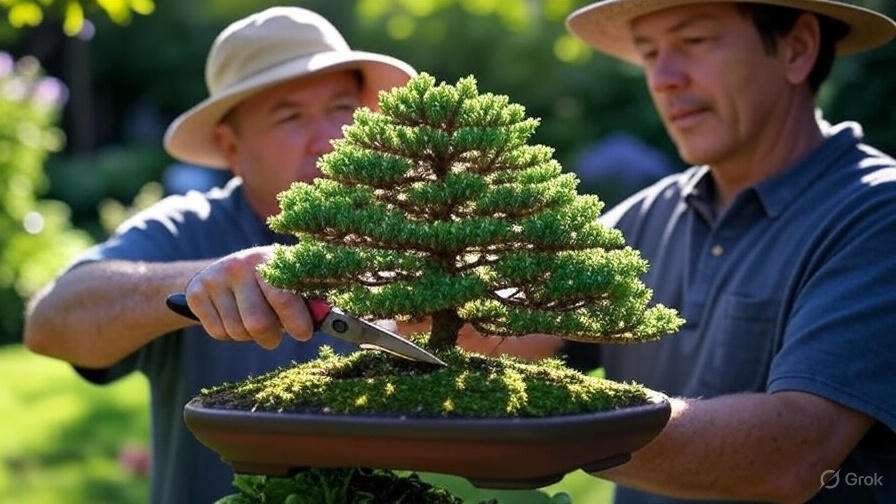
Tools You’ll Need
Before you start, make sure you have the right tools:
- Sharp Pruning Shears
– for small branches
- Pruning Saw – for larger, thicker branches
- Gloves
– to protect your hands from splinters and sap
- Disinfectant – to clean your tools between cuts and prevent spreading disease
How to Prune Cedar Boot Trees
- Start with Dead or Damaged Branches
Look for any dead, dying, or diseased branches and remove them first. This opens up space for healthier growth. Always cut these branches back to the base or to a healthy branch junction. - Shape for Balance
Cedar Boot Trees naturally have a pyramidal shape, but if yours has grown unevenly, gently trim the outer branches to encourage a symmetrical form. Focus on cutting just a little at a time—pruning too aggressively can stress the tree. - Thin Out the Center
If your tree has dense growth, thinning out the center can improve airflow and sunlight penetration. Use your pruning shears to selectively remove smaller branches in the middle, giving the tree a more open structure. - Cut at the Right Angle
Always prune at a slight angle to prevent water from collecting on the cut surface, which can lead to rot. Make your cuts just above a bud or side branch to encourage new growth in the right direction. - Don’t Overdo It
Avoid cutting away more than 20-30% of the tree’s branches in one go. Over-pruning can stress the tree, stunt growth, and leave it vulnerable to disease.
Tips for Shaping Your Tree
- Use the Natural Shape
: Don’t try to force your tree into an unnatural shape. Instead, follow its natural form to enhance its beauty.
- Trim Regularly: Pruning once or twice a year is usually enough to keep your tree healthy. A light trim in the spring, followed by a checkup in fall, should do the trick.
- Keep an Eye on New Growth: As the tree grows, keep it tidy by trimming back new shoots that are growing in awkward directions. This will help the tree maintain its balance and shape.
Aftercare
Once you’ve pruned and shaped your Cedar Boot Tree, take care of it by watering regularly, especially during dry spells. A well-maintained tree will recover quickly and continue to thrive in your garden.
With these easy steps, you’ll be able to keep your Cedar Boot Trees in top shape, ensuring they grow strong and healthy for years to come.
By following these simple pruning and shaping tips, you’ll promote healthy growth and create a stunning focal point in your yard! If you’re ready to dive deeper into Cedar Boot Tree care, check out our other guides for more expert advice.
Fertilizing Cedar Boot Trees 
Cedar Boot Trees are hardy and resilient, but like all plants, they thrive when properly nourished. Fertilizing is essential to encourage strong growth, vibrant green foliage, and long-term health. Here’s your ultimate guide to fertilizing Cedar Boot Trees the right way. Let’s dive in!
Why Fertilizing Matters 
Fertilizing Cedar Boot Trees replenishes the nutrients in the soil that may be depleted over time. It helps improve soil structure, promotes root development, and supports overall tree health, ensuring your tree remains vibrant and resilient against pests and diseases.
When to Fertilize 
Timing is everything! Cedar Boot Trees benefit from two key fertilizing sessions per year:
- Early Spring – Apply fertilizer just as the tree comes out of dormancy. This helps jumpstart growth for the new season.
- Late Fall – A lighter dose of fertilizer before winter ensures the tree stores enough nutrients to survive colder months and emerge strong in the spring.
Avoid fertilizing during the peak of summer or when the tree is under stress from drought or extreme temperatures.
Choosing the Right Fertilizer 
Opt for a balanced, slow-release fertilizer with an NPK (Nitrogen-Phosphorus-Potassium) ratio like 10-10-10. This provides an even mix of essential nutrients. You can also consider organic options like compost or well-aged manure for a more natural approach.
- Nitrogen (N) supports leafy growth.
- Phosphorus (P) boosts root development and flowering.
- Potassium (K) improves overall plant health and disease resistance.

How to Apply Fertilizer 
- Granular Fertilizer: Spread the fertilizer evenly around the base of the tree, extending to the tree’s drip line (the outermost part of the branches). Water it in thoroughly.
- Liquid Fertilizer: If using a liquid feed, dilute according to the instructions on the label and apply directly to the soil around the roots. Be careful not to overdo it!
Common Mistakes to Avoid 
- Over-fertilizing: Too much fertilizer can burn the roots and stress your tree. Stick to the recommended amount.
- Applying on dry soil: Always water your Cedar Boot Tree before and after fertilizing to help the nutrients absorb properly.
- Using high-nitrogen fertilizers: While nitrogen is important, an excess can lead to weak, leggy growth. Keep it balanced!
Signs Your Tree Needs Fertilizing 
Look out for signs that your Cedar Boot Tree is craving nutrients:
- Pale or yellow leaves – A lack of nitrogen may be the culprit.
- Stunted growth – If your tree isn’t growing as expected, it could be a nutrient deficiency.
- Thin or sparse canopy – This indicates your tree isn’t getting the right balance of nutrients.
Organic Fertilizing Options 
For eco-friendly gardeners, organic fertilizers like fish emulsion, compost tea, or worm castings can be excellent alternatives to chemical fertilizers. They improve soil health and encourage beneficial microorganisms in the soil.
Final Thoughts 
Fertilizing your Cedar Boot Tree is a straightforward but crucial task that can significantly improve its health and appearance. By following the right fertilizing schedule and using the appropriate products, your tree will thrive, adding beauty and longevity to your landscape. Happy gardening!
This section is optimized for search engines with keywords like “fertilizing Cedar Boot Trees,” “tree care,” and “organic fertilizer,” ensuring that users searching for tree care tips will find this advice useful and actionable.
Repotting Cedar Boot Trees 
Repotting your Cedar Boot Tree is an essential part of its care routine to ensure it thrives for years to come. 
1. Choose the Right Time 
The best time to repot a Cedar Boot Tree is during its dormant season, typically in early spring before new growth begins. This minimizes the shock to the plant and allows it to recover quickly.
2. Select the Proper Pot 
Pick a new pot that’s 2–3 inches larger in diameter than the current one. Cedar Boot Trees prefer slightly snug roots, so avoid going too large. A pot with drainage holes is a must to prevent waterlogging, which can lead to root rot.
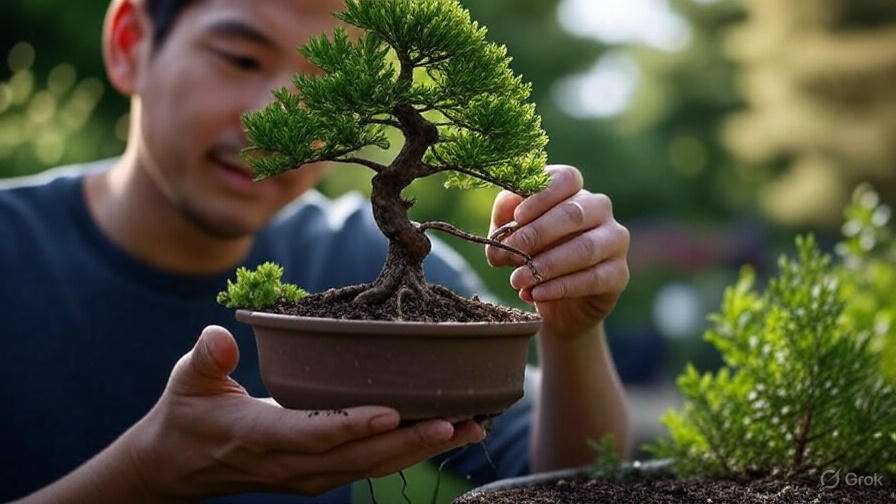
3. Prepare Your Potting Mix 
A well-draining, nutrient-rich mix is ideal for Cedar Boot Trees. You can use a combination of potting soil, perlite, and sand to ensure proper drainage and air circulation around the roots. Cedar Boot Trees don’t like to be too wet, so good drainage is key!
4. Gently Remove the Tree 
Carefully slide the tree out of its current pot. If it’s stuck, lightly tap the sides of the pot or gently squeeze it to loosen the root ball. Avoid pulling on the trunk—handle it by the base of the root system to prevent damage.
5. Trim the Roots 
Inspect the roots for any signs of rot, mold, or overcrowding. Trim any damaged or overly long roots using clean, sharp scissors. This encourages the growth of healthy roots in the new pot.
6. Add Fresh Soil 
Place a layer of fresh potting mix at the bottom of the new pot. Set the tree in place, ensuring it sits at the same depth as before. Fill in around the roots with more soil, gently packing it down as you go to eliminate air pockets.
7. Water Thoroughly 
Once your Cedar Boot Tree is in its new pot, water it thoroughly. Make sure the water drains out of the bottom of the pot, and then let the tree settle into its new home. Keep the soil moist (but not soggy) for the next few weeks to help the roots establish themselves.
8. Monitor and Adjust 
After repotting, place your Cedar Boot Tree in a location with indirect sunlight for a few weeks to reduce stress. Keep an eye on its water needs and avoid overwatering during this recovery period. You should start seeing new growth within a few weeks!
Pro Tip: Avoid Repotting Too Often 
Cedar Boot Trees don’t need to be repotted every year. In fact, repotting every 2–3 years is usually sufficient unless the roots are visibly outgrowing the pot. Over-repotting can lead to stress and slow growth.
By following these simple steps, your Cedar Boot Tree will have the space it needs to grow strong and healthy for years to come! 
This section offers a comprehensive, easy-to-follow guide that balances helpfulness and brevity, making it both informative and beginner-friendly.
Common Problems with Cedar Boot Trees and How to Fix Them 
Cedar boot trees are fantastic for preserving the shape and structure of your boots, but like all tools, they can sometimes face issues. If you’ve noticed your cedar boot trees aren’t working as well as they should, here’s how to troubleshoot and fix common problems.
1. Dryness and Splitting 
Problem: Over time, cedar wood can dry out, leading to splits or cracks, which reduces the effectiveness of your boot trees. This is often caused by prolonged exposure to heat or dry conditions.
Solution:
- Moisturize the Wood: Use a cedar wood conditioner or a light coat of mineral oil to restore moisture and prevent cracks. Apply sparingly and let it absorb for a few hours.
- Store Properly: Keep your cedar boot trees in a cool, dry place—not near direct heat sources like radiators or fireplaces.
2. Weak Aroma 
Problem: Cedar’s signature scent can fade over time, especially after prolonged use. The scent is not just pleasant—it helps to repel insects and moisture from your boots.
Solution:
- Sand the Surface: Lightly sand the surface of your cedar boot trees with fine-grit sandpaper to refresh the aroma.
- Use Cedar Oil: Apply a few drops of cedar oil on the wood to reinvigorate the scent.
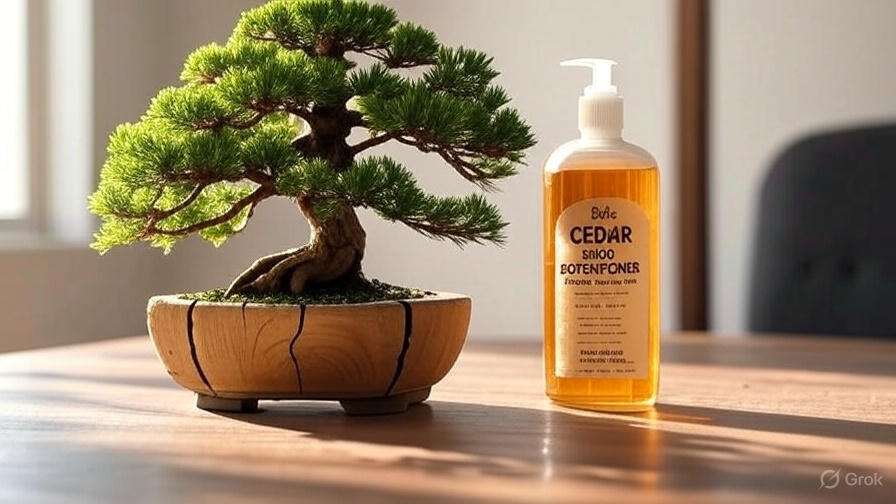
3. Loose or Broken Springs 
Problem: The spring mechanism inside your cedar boot trees can weaken, making them less effective at maintaining your boots’ shape.
Solution:
- Tighten or Replace the Spring: If the spring is loose, carefully tighten it with pliers. If it’s broken, look for replacement parts or consider purchasing a new set.
- Consider Upgrading: Choose boot trees with higher-quality, durable springs that are built to last longer.
4. Warping and Misshapen Boot Trees 
Problem: Cedar boot trees may warp or lose their form, especially if they’re exposed to moisture or improperly sized for your boots.
Solution:
- Check Size: Make sure your boot trees are the right size for your boots. If they’re too large or small, they may not work effectively.
- Store in a Dry Place: Always store your boot trees in a dry, cool environment to prevent warping caused by moisture.
5. Inadequate Odor Absorption 
Problem: Cedar wood naturally absorbs moisture and odor, but over time, it can become less effective, especially if it’s been used for a long period.
Solution:
- Freshen Up the Cedar: Sand the surface gently to refresh the wood and enhance its moisture-absorbing properties.
- Replace When Needed: If your cedar boot trees no longer absorb odors effectively, it may be time to replace them. New cedar wood will perform better in keeping your boots fresh.
6. Difficulty in Adjusting to Fit Different Boots 

Problem: Some cedar boot trees don’t have adjustable sizing, which can make them incompatible with different types of boots.
Solution:
- Opt for Adjustable Models: Look for cedar boot trees with adjustable width and length, ensuring they fit a variety of boot styles.
- Use Multiple Pairs: If you have different boot sizes, consider having multiple cedar trees to accommodate each pair.
Final Thoughts 
Cedar boot trees are an essential part of maintaining the longevity and shape of your boots, but like any product, they can face wear and tear. Regular maintenance and mindful storage can go a long way in keeping them in top shape. If problems persist, don’t hesitate to replace them for maximum effectiveness.
By addressing these common issues, you can ensure that your cedar boot trees continue to serve you well, preserving the beauty and function of your boots for years to come!
Seasonal Care for Cedar Boot Trees 
Cedar boot trees, like any plant, go through distinct seasonal changes that require tailored care to keep them healthy and thriving year-round. Whether you’re in the midst of scorching summer or facing a chilly winter, understanding how to adjust your care routine will help your cedar boot tree flourish.
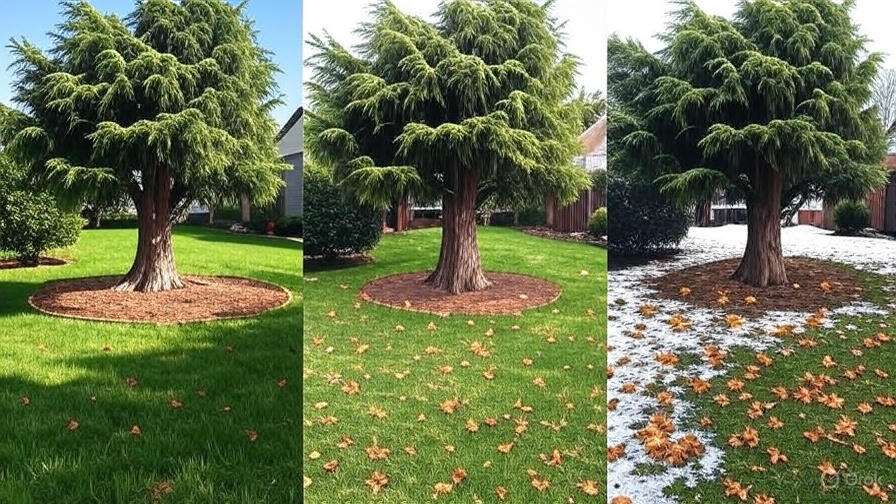
Spring: Awakening from Dormancy 
As the weather warms, cedar boot trees begin to emerge from their dormant state. This is the perfect time to give them a gentle “wake-up” call:
- Prune Dead or Damaged Branches: Start by trimming any dead or diseased branches to promote healthy growth.
- Fertilize Lightly: Apply a balanced, slow-release fertilizer to give your tree the nutrients it needs for strong growth.
- Water Well: Cedar trees need consistent moisture as they begin their growth cycle, but make sure the soil drains well to prevent root rot.
Summer: Growth and Maintenance 
During the warmer months, cedar boot trees will grow most vigorously. Keep an eye on their needs to ensure they stay hydrated and healthy:
- Regular Watering: Cedar boot trees prefer moist but well-drained soil. Water deeply and consistently during hot weather.
- Mulch to Retain Moisture: Adding a layer of organic mulch around the base of the tree helps retain moisture and regulate soil temperature.
- Watch for Pests: Keep an eye out for insects, particularly spider mites and aphids. If you spot any, treat with an organic insecticidal soap to keep your tree healthy.
Fall: Preparing for the Cold 
As temperatures drop, it’s time to start preparing your cedar boot tree for the cooler months ahead:
- Reduce Watering: While still essential, reduce watering in fall as the tree slows down its growth.
- Protect the Roots: Apply a thicker layer of mulch around the base to help insulate the roots against the coming cold.
- Monitor for Disease: Fall is a prime time for fungal diseases, so keep your cedar tree free from excessive moisture on the foliage by watering at the base.
Winter: Rest and Protection 
Winter can be harsh, but with the right care, your cedar boot tree can endure the cold:
- Shield from Wind: Winter winds can dry out trees, so consider wrapping the tree with burlap or setting up a temporary windbreak to protect it.
- Avoid Fertilizing: Since your tree is in dormancy, it’s best to hold off on fertilizing until spring when growth resumes.
- Check for Snow or Ice Buildup: Gently remove any snow or ice from the branches to prevent damage. However, avoid using force, as this can break delicate limbs.
By following these seasonal care tips, your cedar boot tree will remain strong and healthy throughout the year. 
Conclusion 
Caring for cedar boot trees may seem daunting at first, but with the right knowledge and consistent effort, you can ensure your tree thrives for many years to come. By following the tips outlined in this guide— from providing the right growing conditions and watering routine to pruning, repotting, and addressing common issues—your cedar boot tree will grow into a beautiful, resilient addition to your landscape.
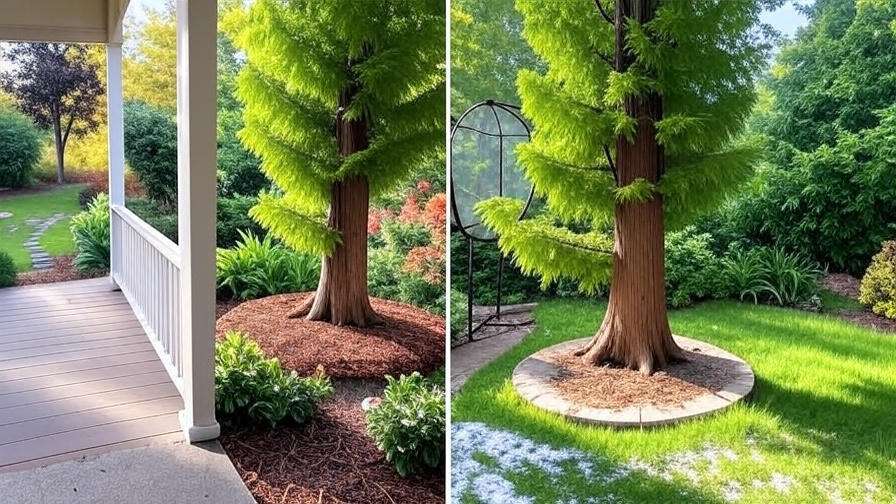
Remember, patience is key. These trees grow slowly, but with each passing season, you’ll see your care and dedication rewarded with healthy, vibrant growth. Whether you’re new to gardening or a seasoned expert, taking the time to understand the needs of your cedar boot tree will result in a thriving, long-lasting plant.
Now that you’re equipped with all the essential tips, go ahead and start applying them! Keep an eye on your tree’s progress, and don’t hesitate to reach out with questions or share your success stories in the comments below. 
Frequently Asked Questions(FAQ)
How often should I water my cedar boot tree?
Water your cedar boot tree once a week, but adjust based on weather conditions. During hot, dry spells, you may need to water more frequently. Always check if the top 1–2 inches of soil are dry before watering, and make sure the pot has good drainage to avoid root rot.
Can cedar boot trees be grown indoors?
Cedar boot trees are best suited for outdoor environments, as they require plenty of sunlight to thrive. However, they can be grown indoors if placed near a sunny window and provided with proper humidity. Keep in mind that they may not grow as vigorously indoors compared to an outdoor setting.
What type of soil is best for cedar boot trees?
Cedar boot trees prefer well-draining soil, such as a mix of loamy or sandy soil with some organic matter. The soil should be slightly acidic to neutral (pH 6.0–7.5). You can enhance drainage by adding sand or perlite to the soil mix.
How do I prune my cedar boot tree?
Prune your cedar boot tree in late winter or early spring, before new growth begins. Trim away dead or diseased branches, as well as any overly long or crowded areas. Use sharp, clean tools to make clean cuts, which will help the tree heal faster and grow stronger.
When should I fertilize my cedar boot tree?
Fertilize your cedar boot tree in early spring and again in mid-summer using a balanced, slow-release fertilizer. Avoid fertilizing in the winter when the tree is dormant. Over-fertilizing can lead to weak growth or leaf burn, so follow the manufacturer’s recommendations carefully.
Why are the leaves of my cedar boot tree turning yellow?
Yellowing leaves could be caused by overwatering, nutrient deficiencies, or poor sunlight. Ensure you’re watering properly—let the soil dry out slightly between waterings. Also, check if the tree is getting enough light and consider adding a balanced fertilizer if the soil is lacking nutrients.
How do I know if my cedar boot tree is getting enough sunlight?
Cedar boot trees need at least 4-6 hours of direct or indirect sunlight daily. If your tree’s growth is slow or if the leaves are sparse, it may not be getting enough light. Consider moving it to a sunnier spot or supplementing with a grow light if you’re growing it indoors.
How often should I repot my cedar boot tree?
Repot your cedar boot tree every 2-3 years or when the roots outgrow their pot. The best time to repot is in early spring, just before the growing season begins. Choose a pot that’s 1–2 inches larger in diameter than the current one and refresh the soil to promote healthy root growth.


